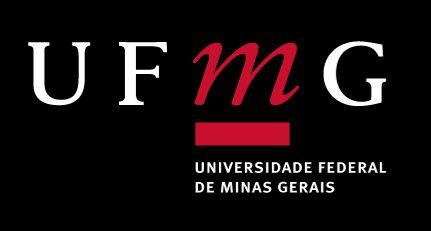Efeito das características físicas e da cobertura do solo na vazão e turbidez de nascentes sob diferentes abordagens estatísticas
Keywords:
Random Forest, Machine Learning, Recovery of Degraded Areas, AICAbstract
The lack of proper planning and disorderly land use significantly impacts natural resources, especially water. The increase in data volume to address complex challenges, such as protecting and enhancing water resource availability, introduces potential issues like overfitting and multicollinearity during analyses. Therefore, this study aimed to employ different statistical methods to mitigate these issues, examining the effects and influences of environmental factors and soil physical characteristics on the flow and turbidity of 82 springs. Various approaches were utilized, including Random Forest and Akaike Information Criterion, both proving consistent concerning the analyzed variables. Arboreal coverage showed a stronger correlation with increased flow, while shrub coverage favored higher turbidity. Shrub coverage can facilitate surface runoff, contributing to increased flow turbidity. The vegetation coverage (arboreal and shrub) may have favored water infiltration processes, enhancing flow. The provided results have the potential to play a crucial role in guiding best practices in data analysis and strategies for the recovery and protection of springs.
Downloads
References
AUSTIN, P. C.; TU, J. V. Bootstrap methods for developing predictive models. The American Statistician, v. 58, n. 2, p. 131–137, 2004.
BOS, K; GUPTA, J. Stranded assets and stranded resources: Implications for climate change mitigation and global sustainable development. Energy Research & Social Science, New York, v. 56, p. 101215, 2019.
CHAN, J.Y.-L.; LEOW, S.M.H.; BEA, K.T.; CHENG, W.K.; PHOONG, S.W.; HONG, Z.-W.; CHEN, Y.-L. Mitigating the Multicollinearity Problem and Its Machine Learning Approach: A Review. Mathematics, n.10, v.8, p.1283, 2022.
COSTA, W. C.; PIGA, F. G.; MORAES, M. C. P.; DORICI, M.; SANGUINETTO, E. de C.; de LOLLO, J. A.; MOSCHINI, L. E.; LORANDI, R.; OLIVEIRA, L. J. Fragilidade ambiental e escassez hídrica em bacias hidrográficas: Manancial do Rio das Araras – Araras, SP. Revista Brasileira de Recursos Hídricos, Porto Alegre, v. 20, n. 4, p.946-958, 2015.
DE BRITO, A. P. M.; DE MELO, I. M. S; SILVA, R. M. Variabilidade espaço-temporal da estrutura da paisagem e fragmentação florestal na APA da Serra de Baturité no Ceará. Ambiente: Gestão e Desenvolvimento, Boa Vista, v. 1, n. 1, p. 96-104, 2021.
FERNANDES, J. de F.; DE SOUZA, A. L. T.; TANAKA, M. O. Can the structure of a riparian forest remnant influence stream water quality? A tropical case study. Hydrobiologia, New York, v. 724, n. 1, p. 175-185, 2014.
DIEL, P. S.; DA COSTA, P. F.; DE OLIVEIRA, P. S. R.; DA SILVA, N. L. S.; ROSSET, J. S. Capacidade de uso de solo das propriedades rurais na microbacia do córrego Guará no Município de Marechal Cândido Rondon/PR. Scientia Agraria Paranaensis, Marechal Cândido Rondon, v. 12, p. 400–410, 2000.
GAMA, L. H. O. M.; PAIVA, P. F. P. R.; SILVA, O. M. J; RUIVO, M. L. P. Modelagem ambiental e uso de inteligência artificial para prognóstico de desmatamento: o caso da Rebio do Gurupi-MA. Research, Society and Development, Vargem Grande Paulista, v. 10, n. 2, p. e13810211609, 2021.
GENUER, R.; POGGI, J.; TULEAU-MALOT, C.. VSURF: an R package for variable selection using random forests. The R Journal, Vienna, v. 7, n. 2, p. 19-33, 2015.
GOMES, V. P.; ARAÚJO, M.S. B.; GALVÍNCIO, J. D. Mudanças espaço-temporais no uso e cobertura da terra na bacia hidrográfica do rio Pontal a partir de dados referenciais do Google Earth Pro. Revista Brasileira de Geografia Física, Recife, v. 14, n. 7, p.4148-4160, 2021.
HONG, C.; ZHANG, Q.; ZHANG, Y.; DAVIS, S. J.; TONG, D.; ZHENG, Y. Impacts of climate change on future air quality and human health in China. Proceedings of the National Academy of Sciences, Washington, v. 116, n. 35, p. 17193-17200, 2019.
KASSAMBARA, A. rstatix: Pipe-friendly framework for basic statistical tests. 2021. R package version 0.6.0. Available in:< Available in: https://cran. r-project. org/web/packages/rstatix/index. html>. Acessado em: 17 Abril 2023.
KLOCK, A. M.; VOGT, K. A; VOGT, D. J.; GORDON, J. G.; SCULLION, J. J.; SUNTANA, A. S.; MAFUNE, K. K.; POLYAKOV, A. Y.; GMUR, S. J.; DE LA ROSA, C. G. See the forest not the trees! Ecosystem-based assessment of response, resilience, and scope for growth of global forests, Ecological Indicators, New York, v. 140, p. 108973, 2022.
LANTZ, B. Machine Learning with R, 2nd ed., Packt Publishing, 2015, 396 p.
MELLO, K. D.; BRITES, A; BORGES, C. M.; TAVARES, P. A.; METZGER, J. P.; RODRIGUES, R. R.; SANTOS, L. S.; JOLY, C.A.; SPAROVEK, G. Science and environmental policy establishment: the case of the Forest Act in the State of São Paulo, Brazil. Biota Neotropica, São Paulo, v. 22, e20211373, 2022.
OLIVEIRA, R. C. M; LIMA, P. V. P. S; SOUSA, R. P. Gestão ambiental e gestão dos recursos hídricos no contexto do uso e ocupação do solo nos municípios. Gestão & Regionalidade, São Caetano do Sul, v. 33, n. 97, p. 48-64, 2017.
MARMONTEL, C. V. F.; RODRIGUES, V. A. Avaliação qualitativa de nascentes com diferentes coberturas do solo e conservação da vegetação em seu entorno no Córrego Pimenta. Scientia Agraria Paranaensis, Curitiba, v. 14, n. 1, p.53-59, 2015.
PESSI, D. D.; EREIO, P. K. B; ALVES, G. B. M; MARTARELLO, A. P; LOVERDE-OLIVEIRA, S. M. Qualidade da cobertura vegetal em áreas de preservação permanente de nascentes. Anuário do Instituto de Geociências, Rio de Janeiro, v. 41, n. 3, p. 270-280, 2019.
PINTO, L. V. A.; BOTELHO, S. A.; DAVIDE, A. C.; FERREIRA, E. Estudo das nascentes da bacia hidrográfica do Ribeirão Santa Cruz, Lavras, MG. Scientia Florestalis, Piracicaba, n. 65, p. 197-206, 2004.
PINTO, L. V. A.; ROMA, T. N.; BALIEIRO, K. R. C. Avaliação qualitativa da água de nascentes com diferentes usos do solo em seu entorno. Cerne, Lavras, v. 18, p. 495-505, 2012.
R CORE TEAM. R: A language and environment for statistical computing. R Foundation for Statistical Computing. Disponível em: <https://www.r-project.org> Acesso em: 28/11/2022.
RESENDE, H. C.; MENDES, D. R.; MENDES, J. E. D. G; BERNARDES, W. A. Diagnóstico e ações de conservação e recuperação para as nascentes do córrego-feio, Patrocínio, MG. Bioscience Journal, Uberlândia, v. 25, n.5, p. 112-119, 2009.
RIZOPOULOS, D.; RIZOPOULOS, M. D. (2009). Package ‘bootStepAIC’. R Package Version 1.3-0, <https://cran.r-project.org/web/packages/bootStepAIC/index.html> Acesso em: 28/11/2022.
ROCHA, C. H. BARRA.; PEREIRA, B. H. C.; SILVA, A. F. R. da; OLIVEIRA, M. de; CASQUIN, A. P.; FIGUEIREDO, M. R. de. Impactos do uso do solo nos recursos hídricos da bacia de contribuição do Lago dos Manacás, Minas Gerais, Brasil. Revista Ambiente e Água, Taubaté, v. 11, n. 4, p.929-942, 2016.
SOPHOCLEOUS, M. Interactions between groundwater and surface water: the state of the science. Hydrogeology Journal, n. 10, p. 52–67, 2002.
SYMONDS, M. R.; MOUSSALLI, A. A brief guide to model selection, multimodel inference and model averaging in behavioural ecology using Akaike’s information criterion. Behavioral Ecology and Sociobiology, New York, v. 65, n. 1, p. 13-21, 2011.
TAYLOR, R. Interpretation of the correlation coefficient: a basic review. Journal of Diagnostic Medical Sonography, Thousand Oaks, v. 6, n. 1, p. 35-39, 1990.
TEIXEIRA, P. C.; DONAGEMMA, G. K.; FONTANA, A. I.; TEIXEIRA, W. G. Manual de métodos de análise de solo. Brasília: EMBRAPA Solos, 3 ed. 2017, 574 p.
VAN CAMP, M.; WALRAEVENS, K. Recovery scenarios for deep over-exploited aquifers with limited recharge: methodology and application to an aquifer in Belgium. Environmental Geology, v. 56, p. 1505-1516, 2009.
VIANA, D. S.; KEIL, P.; JELIAZKOV, A. Disentangling spatial and environmental effects: flexible methods for community ecology and macroecology. Ecosphere, Washington, v. 13, n. 4, p. e4028, 2022.
XIONG, B.; NEWTON, S.; LI, V.; SKITMORE, M.; XIA, B Hybrid approach to reducing estimating overfitting and collinearity. Engineering, Construction and Architectural Management, n. 26, v. 10, p. 2170-2185, 2019.
YAMASHITA, T.; YAMASHITA, K.; KAMIMURA, R. A stepwise AIC method for variable selection in linear regression. Communications in Statistics - Theory and Methods, London, v. 36, n. 13, p. 2395-2403, 2007.
Downloads
Published
How to Cite
Issue
Section
License
Copyright (c) 2024 Vinicius Barros Rodrigues, Thales Braga Capetine, Fillipe Tamiozzo Pereira Torres

This work is licensed under a Creative Commons Attribution 4.0 International License.
Os artigos desta revista obedecem a licença Creative Commons — Attribution 4.0 International — CC BY 4.0









